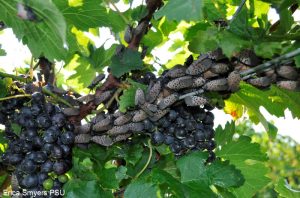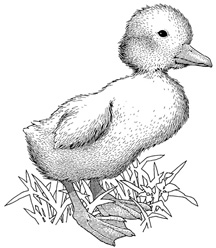Invasive species update; Genetics and tomato flavor

The spotted lanternfly has been at the center of much attention recently. The colorful invasive pest which is native to China, Taiwan and Vietnam, was discovered in Pennsylvania in 2014. The pests have been especially damaging to vineyards and apple orchards, making it a real concern both to commercial growers and home gardeners. Additionally, the spotted lanternfly feeds on more than 70 plant species.
The good news is that two native fungal pathogens have the potential to curb the destructive pest. The College of Agriculture and Life Sciences at Cornell is reporting that Cornell-led research reports have found how two unrelated fungi – Batkoa major and Beauveria bassiana, have been “decimating” spotted lantern fly populations near Reading, Pennsylvania.
The report was lead by Eric Clifton, a postdoctoral researcher at Cornell and Cornell professor Ann Hajek.
Hajek says the finding is important because, “these naturally occurring pathogens could be used to develop methods for more environmentally-friendly control of this damaging invader.”
Clifton adds that the findings are a great example of how a major new invasive herbivore can be suppressed by native pathogens. “Nobody stepped in to do this; it all happened naturally,” he says.
About a year-and-a-half ago, Hajek and Clifton responded to reports of fungi killing the insects in Berks County, Pennsylvania. Last fall, they found dozens of lanternflies killed by the fungi at a site near an apple orchard.
In nature, insects pick up spores of the fungi on contact. The fungi then enter the insect’s body through weak spots in the outer cuticle or “skin” and kill the insect host.
Hajek says she and Clifton will need to study the B. major fungus more, as it is difficult to grow in the lab. The team will also search the area they have been studying in Pennsylvania for other insects susceptible to these fungi, collect soil samples, determine the density of the fungi and test biopesticides based on B. bassiana.
One of the most interesting findings of the report, is that the success of invasive species has been attributed partially to the lack of natural enemies the invaders face when they get here. The fungi proving deadly to the spotted lanternfly, has not proven to be as lethal to native insects. Clifton says he suspects that one reason these two fungi infect spotted lanternflies but not other local insects is that the lanternflies lack the immunity that has evolved in local species, although more research is needed to verify that theory.
Tastier tomatoes
And now some more research-related news for plant lovers: smithsonian.com is reporting that your tomatoes may soon be getting tastier. Scientists recently identified a flavor-making gene variant which is absent from most cultivated tomatoes.
While working to establish a tomato “pan-genome” (a description of the entire set of genes of all members of a species), researchers were able to identify nearly 5,000 previously undocumented genes, providing a reservoir of genes not presently referenced.
Zhangjun Fei, a co-author of the research and a scientist at Cornell University, says that plant breeding is what lead to the disappearance of these genes. Growers for years have bred plants focusing on traits to increase shelf life, bigger fruits and bigger yields. In doing so, they sacrificed other traits such a flavor and defense responses to various pathogens, he explains.
The research means that plant breeders now will be able to take advantage of the newly identified genes – including gene variants – that influence fruit flavor and will result in tastier tomatoes for consumers.






